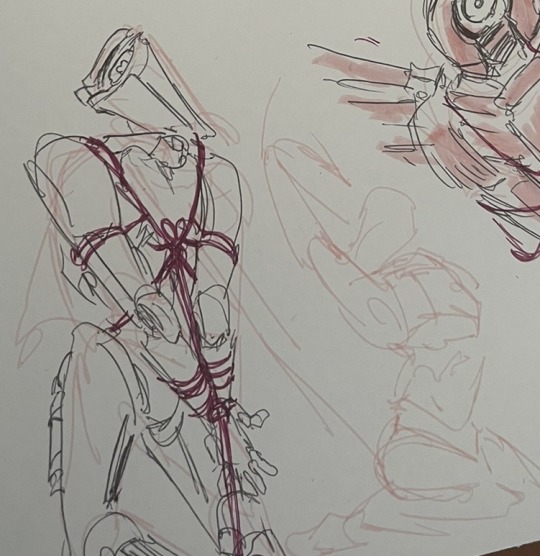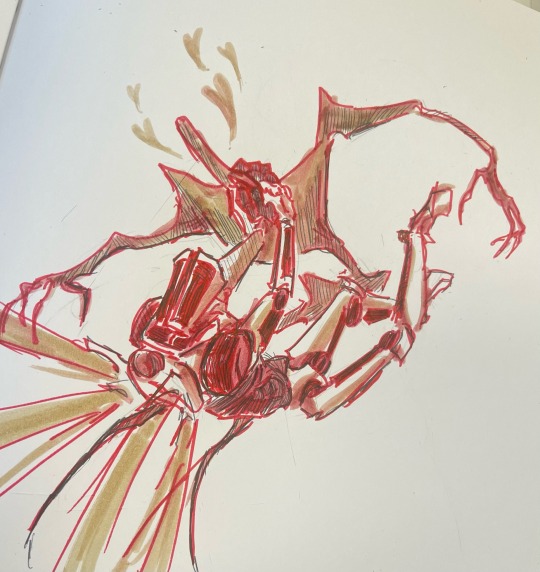#machinetags
Explore tagged Tumblr posts
Text
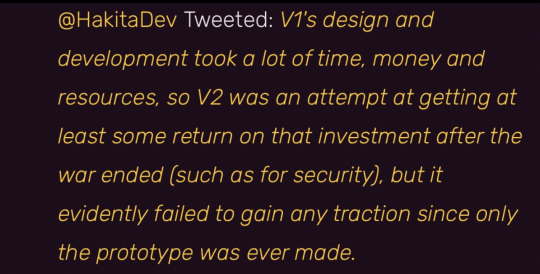

Hakita has given us only one example regarding V2’s purpose as a war machine, and given the fact the war was phased out as the new peace was established, I think it’s fair to assume that security & the protection of humanity was V2’s goal after being built— especially if their makers wanted a return in investment. It failed to gain any traction because of the high expenses it took to produce it, and I think it makes sense to believe it’s desire to protect grew once it was unable to persue it’s intended purpose.
Machines were still very much active after the new peace was established, and I feel that the assumption some machines may still be on the surface after a majority of them descended into hell isn’t a far stretch if V2 was intended to protect. Against what is definitely up for debate.
everyone talks about v2 being a protector and a guardian for humans before humanitys extinction, but i don’t think that that’s backed up by the games lore. based on the terminal data, V2 was developed during the New Peace, yes, but it doesnt say anything about any sort of protection. the first line of the data says ‘The V model was built for war’ which includes V2. the only update stated between v1 and v2 is the more durable plating. the data says that v2 was never produced because there was no demand due to the end of wars.
though, we can only hypothesize what the v models were doing during the New Peace. i guess the terminals don’t really make it clear either. v2s second terminal data says that v1 is ‘more experienced’ but how did it get this experience if it was only a prototype and never saw war? the first data says ‘during times of peace, when no bloodshed was necessary.’ If no bloodshed was necessary, why do you need a robot with guns?
all im saying is i don’t think v2 was any sort of guardian. it either sat wherever v1 was during the New Peace because it never sold, or v2 was more like a cop and the New Peace was not as peaceful as the game wants us to believe
130 notes
·
View notes
Photo
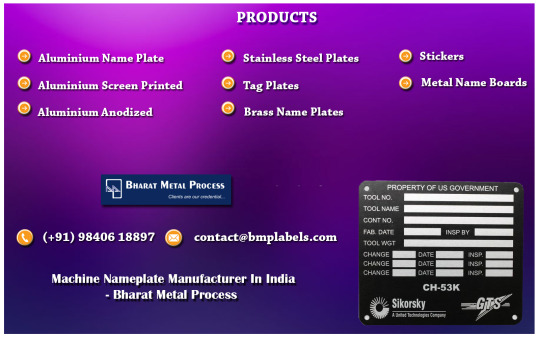
Bharat Metal Process Manufactures All Kinds Of Nameplates for Machines, Industrial Equipment, Electronic Components, etc.
Contact:- (+91) 98406 18897
https://cutt.ly/5JKnJqQ
#nameplates#machinenameplates#industrialnameplate#componentsnameplate#equipmenttags#machinetags#nameplatemakers#nametags#tagplate#commercialtags#commercialnameplates
0 notes
Text
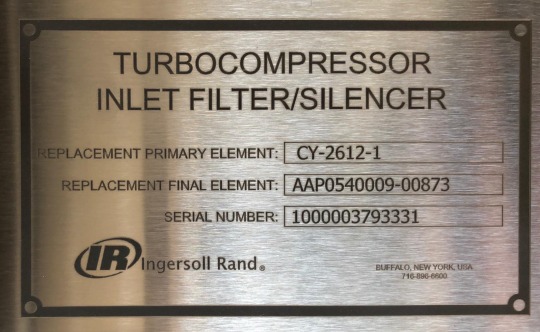
STAINLESS STEEL METAL ENGRAVING- SERIAL PLATES, MACHINE TAGS, PART NUMBERS
Laser Cut and Engrave provides laser cutting, laser engraving, laser marking and laser etching services for cutting, engraving, etching and marking on metals.
We laser cut metal and laser engrave metal materials such as Stainless Steel, Mild Steel, Anodized Aluminum, Brass Alloy, and many more.
LASER CUTTING, ENGRAVING, MARKING AND ETCHING ON WOOD, ACRYLIC, PLASTIC, FOAM, LEATHER, PAPER, RUBBER, AND METAL SERVICES
http://www.cutandengrave.ca
0 notes
Text
NEW MUSIC: CAM'RON FT: A-TRAK & CONWAY THE MACHINE
NEW MUSIC: CAM’RON FT: A-TRAK & CONWAY THE MACHINE
KILLA CAM and THE MACHINE with a certified banger for the streets “GHETTO PROPHETS” this is the Cam we like and the Machine delivered on the hook with all the Drumwork extras to complete the track produced by A-TRAK. CC:SD X CAM’RON x CONWAY THE MACHINEtags: #stacksandkickslifestyle #blogger #blog
youtube
View On WordPress
1 note
·
View note
Photo
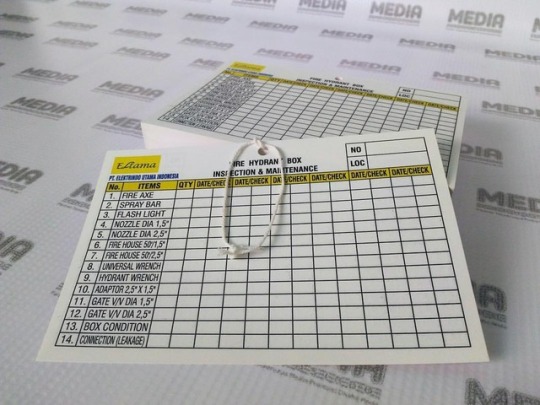
PT. Elektrindo Utama Indonesia • Fire Hydrant Box Inspection & Maintenance Tag berbahan Newtop (plastik) yang dicetak dengan mesin digital offset full colour bisa anda order disini. • Buktikan kualitas & harganya hanya di #TaggingMediaPromosindo • Telp. : 031-3768125 HandPhone : AsFlexi 085102263687 atau XL 08179345579 (Line, Telegram & Whatsapp : ready) Line@ : @mediapromosindo (dengan @) Telegram : @mediapromosindo Bbm : MedPro Site : www.Media-Promosindo.com • #ELTAMA #ResellerWelcome #TerimaOrderseIndonesiaRaya #tag #newtoptag #vinyltag #plastictag #machinetag #inspectiontag #maintenancetag #equipmenttag #safetytag #biohazardtag #chemicalhazardtag #flammabletag #electricaltag #servicetag #fireextinguisherinspectiontag #scaffoldinspectiontag #forkliftag #safetyinspectiontag #inventorytag #customtag (at Media Promosindo)
#terimaorderseindonesiaraya#eltama#vinyltag#forkliftag#machinetag#scaffoldinspectiontag#electricaltag#equipmenttag#servicetag#resellerwelcome#maintenancetag#inventorytag#tag#flammabletag#inspectiontag#safetyinspectiontag#plastictag#newtoptag#taggingmediapromosindo#customtag#safetytag#fireextinguisherinspectiontag#biohazardtag#chemicalhazardtag
0 notes
Link
Simply tag the photo with "foursquare:venue=XXXXXX" where XXXXXX represents the venue ID (the numbers at the end of the venue URL) for the location where the photo was taken.
1 note
·
View note
Text
Machine Tag Hierarchies
something:somethingelse=somethingspecific
With apologies to Jeremy Keith
If you're not already familiar with machine tags the easiest way to think of them is being like a plain old tag but with a special syntax that allows users to define additional structured data about that tag. If you'd like to know more, the best place to start is the official announcement we made about machine tags in the Flickr API group.
If you want to know even more, still, take a look at:
Machine Tag Wildcard URLs
Machine Tags, last.fm and Rock'n'Roll
Flickr, EXIF, Machine Tags, by Paul Mison
Okay! Now that everyone is feeling warm and fuzzy about machine tags: We've added (4) new API methods for browsing the hierarchies of machine tags added to photos on the site. These are aggregate rollups of all the unique namespaces, predicates, values and pairs for public photos with machine tags.
For example, lots of people have added exif: related machine tags to their photos but there hasn't been a way to know what kind of EXIF data has been added: exif:model? exif:focal_length? exif:tunablaster? Or what about all the planespotters who have been diligently adding machine tags to their photos using the aero namespace: What are the predicates that they're tagging their photos with?
Those are the sorts of things these methods are designed to help you find. Sort of like wildcard URLs but for metadata instead of photos. Uh, sort of.
Anyway, the new methods are:
flickr.machinetags.getNamespaces
This returns a list of all the unique namespaces, optionally bracketed by a specific predicate. For example, these are all the namespaces that have an airport predicate:
# ?method=flickr.machinetags.getNamespaces&predicate=airport <namespaces predicate="airport" page="1" total="2" perpage="500" pages="1"> <namespace usage="1931" predicates="1">aero</namespace> <namespace usage="3" predicates="1">geo</namespace> </namespaces>
flickr.machinetags.getPredicates
Like the getNamespaces method this returns a list of all the unique predicates, optionally bracketed by a specific namespace. For example, these are all the predicates that use the dopplr namespace:
# ?method=flickr.machinetags.getPredicates&predicate=dopplr <predicates namespace="dopplr" page="1" total="4" perpage="500" pages="1"> <predicate usage="4392" namespaces="1">tagged</predicate> <predicate usage="1" namespaces="1">traveller</predicate> <predicate usage="7780" namespaces="1">trip</predicate> <predicate usage="4269" namespaces="1">woeid</predicate> </predicates>
flickr.machinetags.getValues
At this point, the pattern should be pretty straightforward. This method returns all the unique values for a specific namespace/predicate pair. For example, these are some of the values associated with the aero:tail machine tag (yes, really, airplane tail models!):
# ?method=flickr.machinetags.getValues&namespace=aero&predicate=tail <values namespace="aero" predicate="tail" page="1" total="1159" perpage="500" pages="3"> <value usage="1">01-0041</value> <value usage="1">164993</value> <value usage="2">26000</value> <value usage="1">4k-az01</value> <value usage="1">4l-tgl</value> <value usage="1">4r-ade</value> <!-- and so on... --> </values>
flickr.machinetags.getPairs
Finally, the getPairs method returns the list of unique namespace/predicate pairs optionally filtered by namespace or predicate.
Rather than including yet-another giant blob of XML, here's a pretty picture of the metro stations in Munich instead:
A few things to note
Certain namespace/predicate pairs have been special-cased to return a single value. As of this writing they are:
geo:lat (and variations)
geo:lon (and variations)
file:name
file:path
anything:md5
If people have particular reasons for needing or wanting these we're open to the idea but otherwise the cost of storing all the variations and the dubious uses for returning them in the first place made us decide to exclude them.
Now what?
photo by Daveybot
Well, that's what we're hoping you'll tell us. Machine tags have been chugging away quietly since we announced them almost two years ago and despite being a bit nerd-tastic and awkward to explain we've been thrilled to see how people have been finding their own use for them.
It turns out we have photos for 31, 594 unique Last.FM events all because people added lastfm:event machine tags to their photos.
Researchers at Lewis & Clark College, in Portland, have been "developing an educational collection of contemporary ceramics images using the photo sharing site Flickr" and machine tags.
Shortly after the launch of Google's Street View feature Mikel Maron "took GeoRSS feeds from Upcoming, grabbed lat/long and associated that with a panoid via the RESTful 'api' and pulled down the images ... and then uploaded the panos to flickr with machine tags".
The Utata Collective uses a combination of groups on Flickr and machine tags to collect photos for their projects.
And the list goes on.
The trick with machine tags has always been to make them both invisible (or at least barely visible) to those people who don't care about them but also as easy as tags to pick up and use for those people who do or who wonder whether they might be the tool they were looking for. One thing we didn't do very well, though, until the release of the machine tag hierarchy APIs was give people a way to learn about machine tags. The only way to find out which machine tags people were using was to hop-scotch your way around people's photostreams or to be part of a larger community having a discussion about which tags to use. Oops.
Which is why it was extra-fantastic when a few short days after we announced the machine tag hierarchy methods on the API list, the ever prolific and awesome Paul Mison wrote back and said:
The obvious thing to build on top of these ... is some sort of graphical machine tag browser, a bit like the Mac OS X / iPod column view browser. So I did.
http://husk.org/code/machine-tag-browser.html
This is entirely self-contained in one file (except for loading jQuery from Google and (cough) the pulser from Flickr). It uses JavaScript to get a full list of namespaces, giving you the option to drill down into predicates and the values available for that namespace/predicate pair.
We're hoping that this provides a little more raw material to play with and maybe find some magic and that you'll tell us what comes next.
Yay!
Oh yeah, the actual API methods
flickr.machinetags.getNamespaces
flickr.machinetags.getPredicates
flickr.machinetags.getValues
flickr.machinetags.getPairs
Enjoy!
In the coming weeks we'll also try to gather most of the blog posts and other writings about machine tags and put them with the rest of the API documentation.
0 notes
Text

ive decided to change my art style for the better. do you like
#these are all poorly traced renditions of the alastor png if you were wondering.help me.helphelphelp#thanks puter for making the v1 that i poorly copy pasted and colored half red#part of me doesnt want to post this because i feel like people wont get the joke but whatever its fucking hilarious to me#machinetag#ultrakill
578 notes
·
View notes
Text
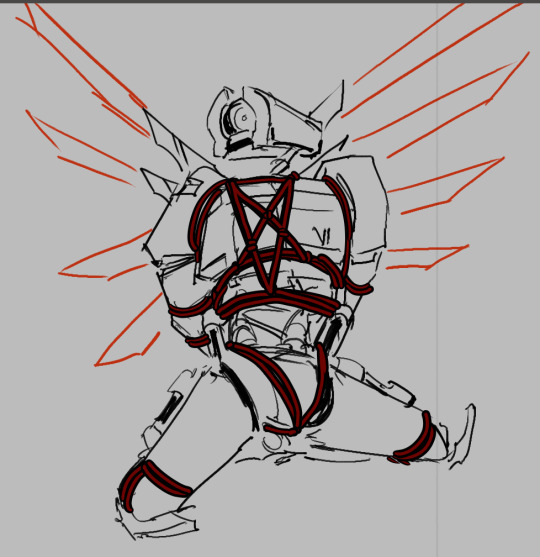
#suggestive#sorry. i wanted to try drawing something like this#this is the worst its getting. its a nice art. ok?#made their wings red. you can decide whatever that means— based it off v2s meaning though#okay im done here#machinetag
588 notes
·
View notes
Text

884 notes
·
View notes
Text

948 notes
·
View notes
Text
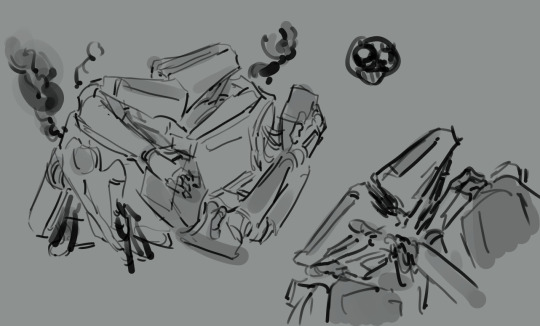
570 notes
·
View notes
Text

471 notes
·
View notes


